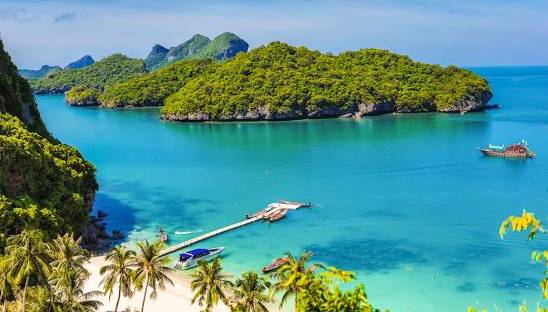Embarking on a journey through Southeast Asia is more than just a mere vacation; it’s an immersive experience that often finds its place atop countless bucket lists. Encompassing a vibrant tapestry of cultures, awe-inspiring landscapes, warm and welcoming people, and a budget-friendly allure, touring Southeast Asia is a transformative adventure that promises memories to last a lifetime.
From the bustling streets of Bangkok to the serene beaches of Bali, the ancient temples of Angkor Wat to the bustling markets of Hanoi, this region beckons travelers with its unparalleled charm and diversity. In this article, we delve into the reasons why a tour of Southeast Asia is an essential addition to any wanderer’s bucket list, exploring the rich culture, breathtaking scenery, genuine hospitality, and remarkable affordability that make this corner of the world an irresistible destination for explorers of all kinds. So, pack your bags and prepare for a journey that will awaken your senses and leave an indelible mark on your soul.
Table of Contents
What Countries Make Up SE Asia?
Most Popular SE Asia Countries to Travel To
Thailand
Vietnam
Indonesia
Malaysia
Cambodia
Hong Kong
Recommended Tours & Tour Groups
Southeast Asia Tour Time?
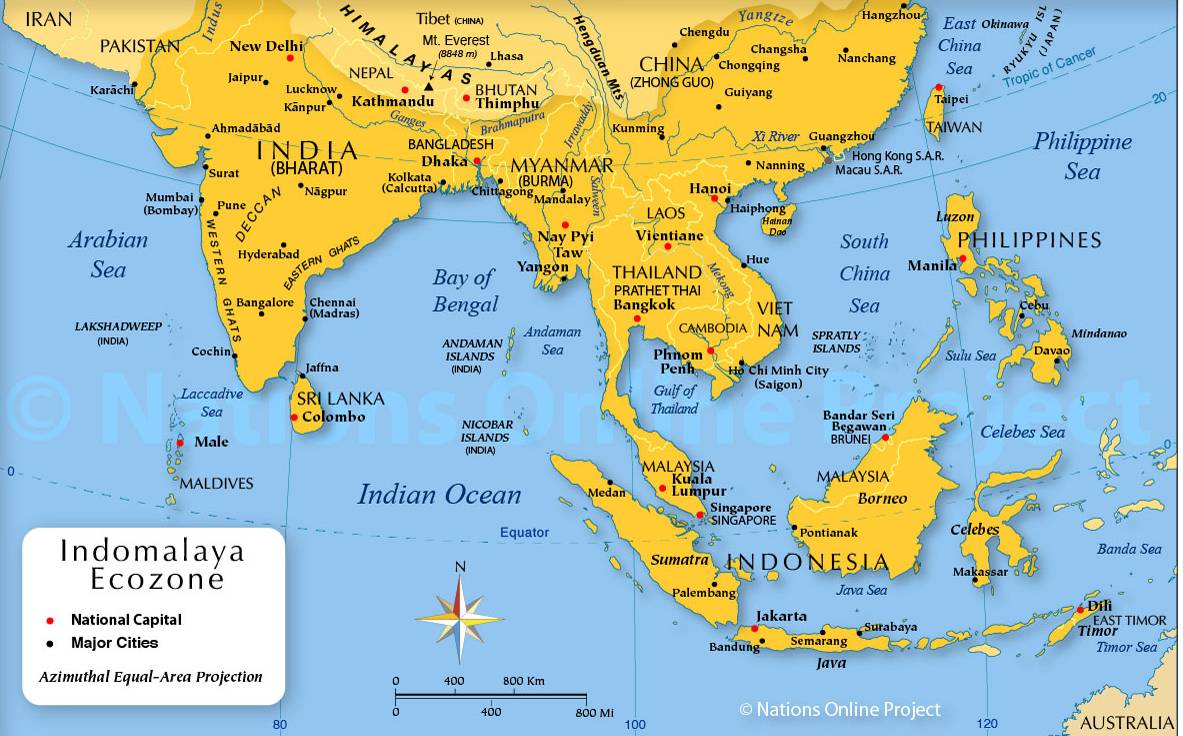
What Countries Make Up SE Asia?
Southeast Asia is a subregion of Asia that typically includes the following countries:
- Brunei
- Cambodia
- East Timor (Timor-Leste)
- Indonesia
- Laos
- Malaysia
- Myanmar (Burma)
- Philippines
- Singapore
- Thailand
- Vietnam
- China (Hong Kong)
These countries are generally considered to be part of Southeast Asia due to geographical, historical, and cultural factors. Keep in mind that categorizations can sometimes vary, but the list above encompasses the core countries commonly associated with Southeast Asia.
Most Popular South East Asia Countries to Visit
Let’s dive into each of the more popular South East Asia countries to visit. We like to go over relevant travel planning data, so whether you use local tour guides, guided tours, or put together and use Asia vacation packages to tour more than one city or county at once, you are prepared with some basic knowledge of what to expect.
Thailand

- Why Visit: Thailand offers a rich cultural experience, stunning landscapes, diverse cuisine, and a wide range of activities, from beach relaxation to adventure tourism.
- Top City: Bangkok – The capital city is known for its vibrant street life, ornate temples (such as Wat Arun and Wat Phra Kaew), bustling markets (like Chatuchak Weekend Market), and modern shopping centers. The city’s mix of traditional and contemporary culture is a major draw.
- Famous Attractions: The ancient city of Ayutthaya, the beautiful beaches of Phuket and Krabi, the historic ruins of Sukhothai, and the serene cultural hub of Chiang Mai.
- Local Currency: Thai Baht. At the time of this writing, 1 USD = 34.93 Baht.
- Entry Visa Needed: For US/ Canada passport holders you do not need an entry visa. You can stay for up to 30 days.
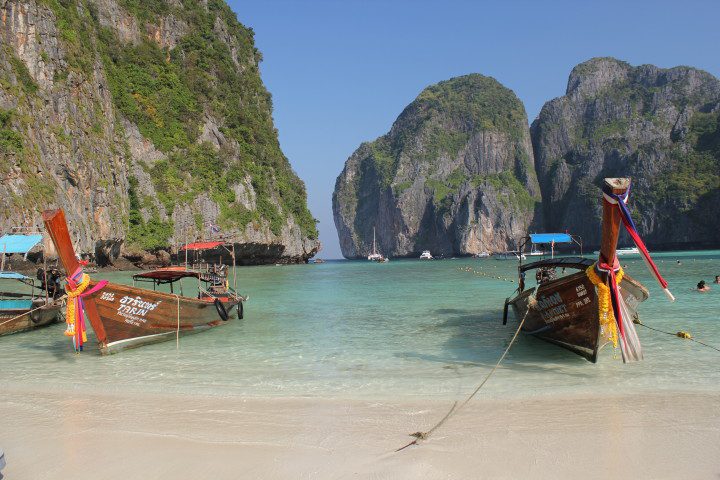
Best Time of the Year to Visit
The best time to visit Thailand depends on the specific experiences you’re seeking and the regions you plan to explore. Thailand has three main seasons: the cool and dry season (November to February), the hot season (March to May), and the rainy season (June to October). Here’s a breakdown of each season:
- Cool and Dry Season (November to February): This is generally considered the best time to visit Thailand. The weather is cooler and more comfortable, and there’s less rainfall. It’s an excellent time for exploring cities, cultural sites, and beaches. The popular festivals of Loy Krathong (floating lanterns) and Songkran (Thai New Year water festival) also fall within this period.
- Hot Season (March to May): The hot season can be quite warm, especially in April. While it’s a good time for beach activities and outdoor adventures, it’s advisable to stay hydrated and protect yourself from the sun. Some areas, particularly in northern Thailand, have a milder climate and can still be enjoyable during this season.
- Rainy Season (June to October): This season brings more rainfall and higher humidity, particularly from July to September. While some areas may experience heavy downpours and flooding, this season can also be a great time to visit if you’re looking for fewer crowds and lower prices. The rain usually doesn’t last all day and can create lush, green landscapes.
For most travelers, the cool and dry season is the ideal time to visit as it offers pleasant weather for exploring various parts of the country. However, it’s important to note that popular tourist destinations, especially beaches and islands, can get quite crowded during this time. If you’re looking for a quieter experience and don’t mind occasional rain, the shoulder seasons (late October to early November and late February to early March) can also be good options.
Keep in mind that weather patterns can vary, and it’s a good idea to check the specific weather conditions for the regions you plan to visit closer to your travel dates.
Vietnam
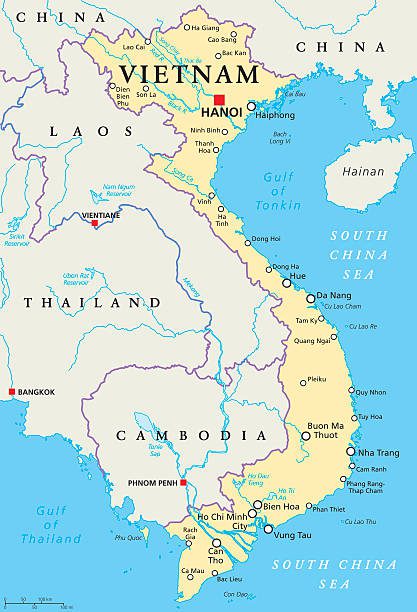
- Why Visit: Vietnam offers a mix of natural beauty, cultural heritage, and bustling city life. Its diverse landscapes and distinct regions provide a varied experience for travelers.
- Top City: Hanoi – The capital is known for its historical sites like the Hoan Kiem Lake, the Old Quarter’s narrow streets, and the bustling markets. The city provides a glimpse into Vietnam’s rich history.
- Famous Attractions: The breathtaking Ha Long Bay, the ancient town of Hoi An, the bustling Ho Chi Minh City (Saigon), and the scenic terraced rice fields of Sapa. Visit the Meekong Delta for day trip boat ride through this fascinating country, and experience everyday life of Vietnamese culture along the waterways.
- Local Currency: Vietnamese Dongs. At the time of this writing, 1 USD = 23,925 Vietnamese Dongs.
- Entry Visa Needed: US/Canada passport holders require an entry Visa.

Best Time of Year To Visit
The best time to visit Vietnam varies depending on the region you plan to explore, as the country has a diverse climate with distinct weather patterns in different areas. Vietnam generally experiences three main seasons: the cool and dry season, the hot and humid season, and the rainy season. Here’s a breakdown of the best times to visit different regions of Vietnam:
- Northern Vietnam (Hanoi, Halong Bay, Sapa): The best time to visit northern Vietnam is during the cool and dry season, which typically runs from November to April. During this time, you can expect comfortable temperatures and minimal rainfall. December to February are the coldest months, but they’re also the most popular for travelers seeking pleasant weather. Sapa’s rice terraces are particularly beautiful from September to November.
- Central Vietnam (Hue, Hoi An, Da Nang): Central Vietnam has a varied climate, with a rainy season from September to December and a hot and dry season from January to August. The best time to visit is from February to April when the weather is generally pleasant and rain is less frequent. Hoi An’s lantern festival during the full moon is a special experience.
- Southern Vietnam (Ho Chi Minh City, Mekong Delta, Phu Quoc): Southern Vietnam experiences a hot and humid climate year-round, with a dry season from November to April and a rainy season from May to October. The dry season is the best time to visit, as you can avoid the heavy rains. December to February are particularly comfortable months for exploring the region.
It’s worth noting that weather patterns can sometimes vary from year to year, so it’s a good idea to check the specific weather forecast for your planned travel dates and destinations. Keep in mind that peak tourist seasons can coincide with the cool and dry seasons, so popular destinations might be more crowded during these times.
The best time to visit Vietnam overall is during its cool and dry season, which tends to be from November to April. However, the optimal time can vary based on the specific regions you plan to visit and your personal preferences for weather and crowd levels.
Indonesia
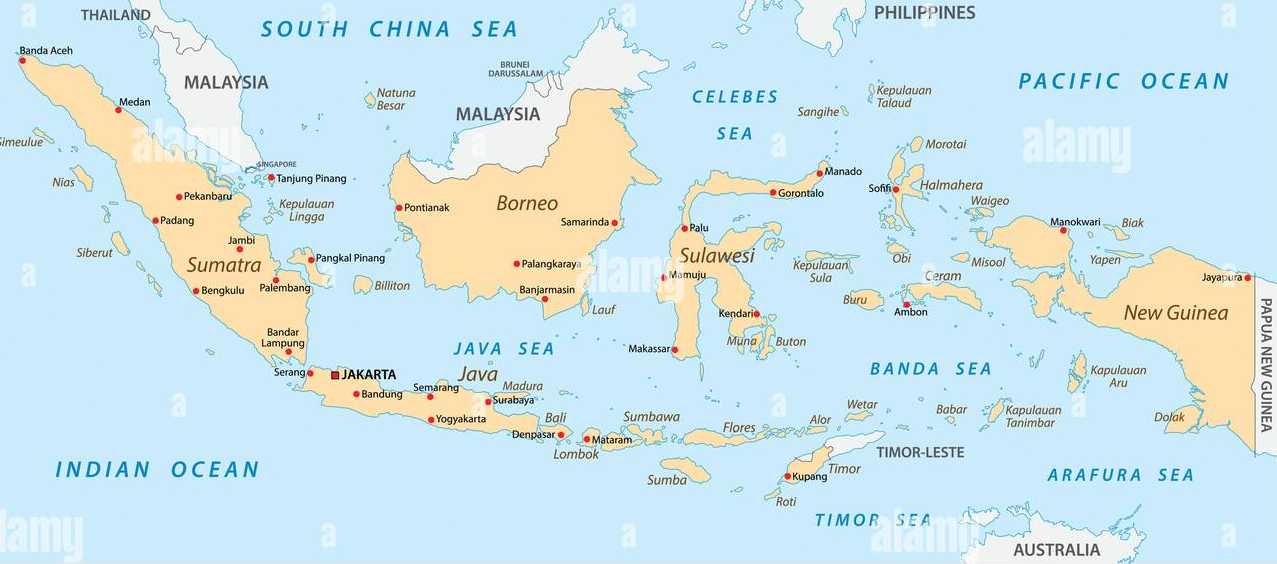
- Why Visit: Indonesia offers a diverse range of experiences, from relaxing on beautiful beaches to exploring ancient temples and getting immersed in local cultures.
- Top City: Bali – While not the capital, Bali is a popular tourist destination known for its stunning beaches, vibrant nightlife, lush landscapes, and traditional Balinese culture.
- Famous Attractions: The ancient temples of Borobudur and Prambanan in Yogyakarta, the cultural city of Ubud, the active volcano Mount Bromo, and the islands of Gili and Lombok.
- Local Currency: Indonesian Rupiahs. At the time of this writing, 1 USD = 15,293 Indonesian Rupiahs
- Entry Visa Needed: US/Canada passport holders do not need an entry visa. You can stay for up to 30 days.
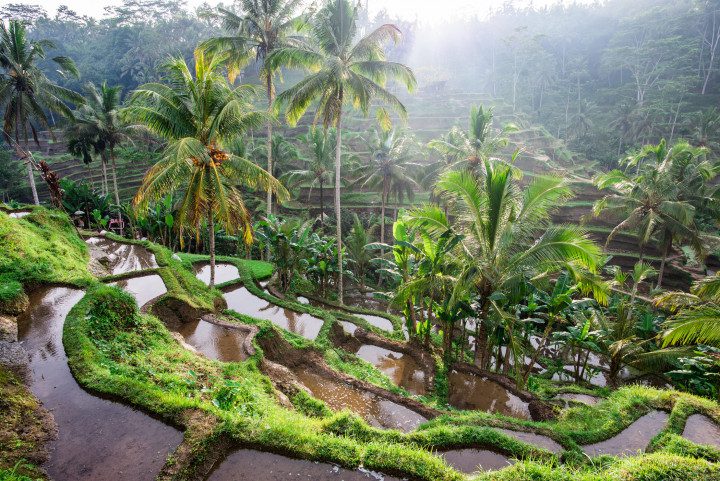
The Best Time of Year to Visit
The best time to visit Indonesia varies depending on the specific islands and regions you plan to explore, as the country spans a vast area and has diverse climatic conditions. Indonesia experiences a tropical climate with two main seasons: the dry season and the wet season. Here’s a general overview of the best times to visit different parts of Indonesia:
- Bali and Java: The dry season in Bali and Java typically runs from April to September. This is considered the best time to visit as the weather is generally sunny and dry. Bali’s beaches, cultural sites, and vibrant nightlife are especially popular during this period. However, keep in mind that July and August can be peak tourist months.
- Sumatra: Sumatra’s dry season aligns with the months of April to September, making this period the best time to visit. You can explore attractions like Lake Toba, Bukittinggi, and the orangutan sanctuary in Bukit Lawang with more favorable weather.
- Borneo (Kalimantan): Similar to other parts of Indonesia, Borneo’s dry season is from April to September. This is a good time to visit Borneo’s rainforests and wildlife reserves.
- Komodo and Flores: The dry season from April to September is ideal for visiting Komodo National Park and the beautiful islands of Flores. This is the best time for diving and trekking to see the famous Komodo dragons.
- Papua and Raja Ampat: The best time to visit Papua and Raja Ampat is during the dry season from October to April. This is when you can explore the stunning underwater biodiversity, vibrant coral reefs, and traditional cultures.
- Sulawesi: The dry season in Sulawesi generally falls between April and September. This period is great for experiencing the unique cultures, landscapes, and marine life of the region.
- Baliem Valley (Western Papua): The dry season from May to October is the best time to trek and explore the cultural diversity of Baliem Valley.
It’s important to note that Indonesia’s weather patterns can vary due to its vast size and geographical diversity. Additionally, some regions, particularly those closer to the equator, might experience rain even during the dry season. Before planning your trip, be sure to research the specific regions you intend to visit and check the local weather forecasts.
Keep in mind that Indonesia is a popular travel destination, and peak tourist seasons might result in higher prices and larger crowds. Consider your interests, preferred activities, and weather preferences when determining the best time to visit.
Malaysia
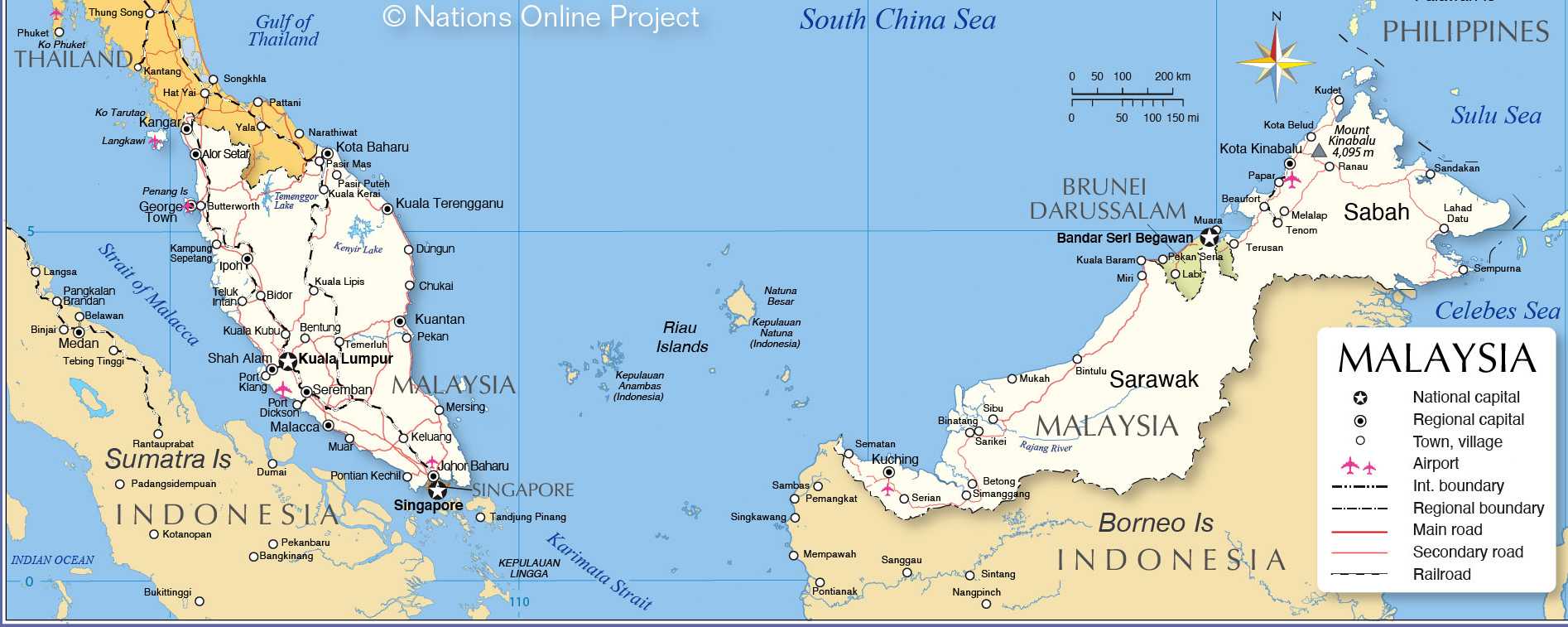
- Why Visit: Malaysia combines modernity with cultural diversity, offering a blend of urban excitement, natural beauty, and rich heritage.
- Top Cities: Kuala Lumpur and Penang – Kuala Lumpur, the capital, features iconic landmarks like the Petronas Twin Towers. Penang is renowned for its historic George Town, a UNESCO World Heritage Site.
- Famous Attractions: The pristine beaches of Langkawi, the diverse wildlife of Borneo, the Cameron Highlands’ tea plantations, and the cultural experiences in Melaka.
- Local Currency: Malaysian Ringgit. At the time of this writing 1 USD = 4.65 Malaysian Ringgits.
- Entry Visa Needed: US and Canadian passport holders do not need an entry visa and can stay up to 30 days.
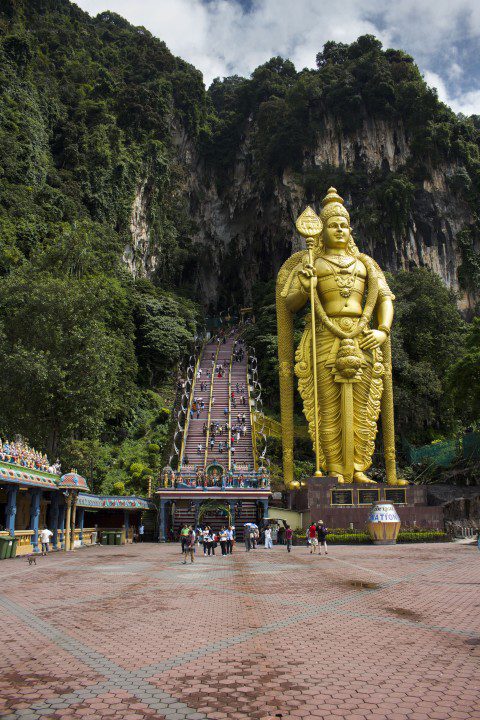
The Best Time of Year to Visit
The best time to visit Malaysia depends on the specific regions you plan to explore, as the country experiences a tropical climate with varying weather patterns in different areas. Generally, Malaysia has two main monsoon seasons: the Northeast Monsoon (November to March) and the Southwest Monsoon (May to September), with the months in between being the inter-monsoon periods. Here’s a breakdown of the best times to visit different regions of Malaysia:
- West Coast (Kuala Lumpur, Penang, Langkawi): The best time to visit the west coast is during the inter-monsoon periods, which are from April to early May and from September to October. During these times, you can expect relatively dry and sunny weather. However, the entire west coast generally experiences a mix of rain and sunshine throughout the year due to its proximity to the equator.
- East Coast (Perhentian Islands, Redang Island, Tioman Island): The best time to visit the east coast is during the dry season of the Northeast Monsoon, which is from March to September. The monsoon season brings heavy rainfall and rough seas to the east coast, leading many resorts and businesses to close during this time.
- Borneo (Kota Kinabalu, Kuching, Bornean rainforests): Borneo’s climate is more consistent, with a wetter season from November to March and a drier season from April to October. The drier season is generally considered the best time to visit Borneo, especially for wildlife and nature enthusiasts. Feeling rushed to go and visiting the wrong time can leave you out on an amazing experience. Plan it right using local guides or find the right vacation packages to enjoy this beautiful country.
It’s important to note that Malaysia’s weather can be unpredictable, and rain can occur even during the dry seasons. Additionally, the country’s climate varies based on its different geographical regions, so it’s advisable to check the specific weather forecast for your intended destinations.
While considering weather, also keep in mind cultural events and festivals that might influence your travel plans. For example, the Chinese New Year (usually in January or February) and Hari Raya Aidilfitri (end of Ramadan) are important celebrations that can impact travel and availability of services.
The best time to visit Malaysia can vary based on the regions you plan to explore and your preferences for weather and cultural experiences. Be sure to research the specific areas you intend to visit to make the most of your trip.
Cambodia
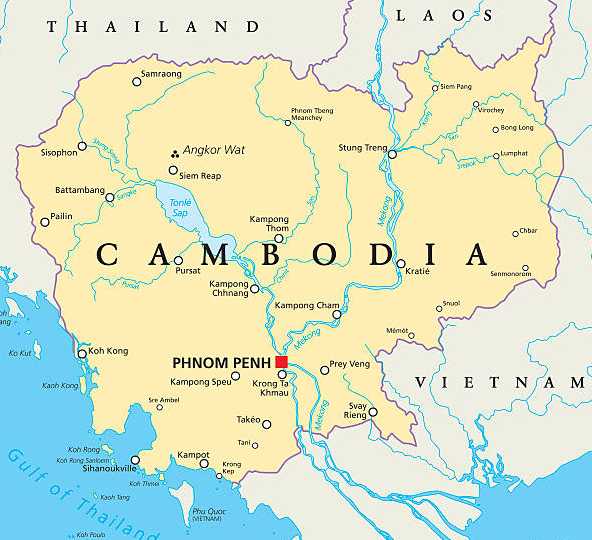
- Why Visit: Cambodia offers a deep dive into its history and culture, with the Angkor temples being a major highlight. The country’s warm people and diverse landscapes contribute to its charm. Use a tour guide to visit the ancient ruins and explore temples to discover the hidden gems of this country.
- Top City: Siem Reap – This city is the gateway to the incredible Angkor Archaeological Park, featuring the awe-inspiring Angkor Wat and other ancient buddhist temples. A certain highlight of SE asia.
- Famous Attractions: The capital city of Phnom Penh with its historical sites, the laid-back coastal town of Sihanoukville, and the serene countryside of Battambang.
- Local Currency: Cambodian Riel. At the time of this writing 1 USD = 4141 Cambodian Riels
- Entry Visa Needed: US and Canadian passport holders do need an entry visa for Cambodia.
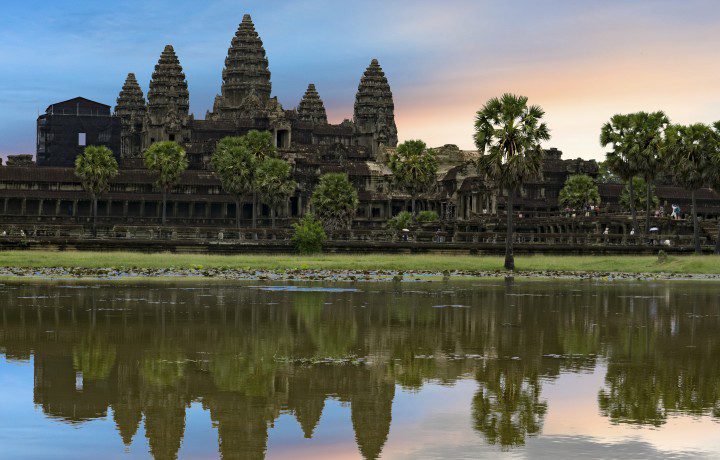
Best Time of Year to Visit
The best time to visit Cambodia largely depends on the weather and your preferred travel experiences. Cambodia has a tropical climate with distinct wet and dry seasons. The weather can also vary between different regions of the country. Here’s a breakdown of the best times to visit Cambodia:
- Cool and Dry Season (November to February): This is generally considered the best time to visit Cambodia. The weather is cooler and more comfortable, and there’s less rainfall. It’s an ideal time for exploring the famous temples of Angkor, including Angkor Wat. The lush landscapes and comfortable temperatures make it a popular tourist season.
- Hot Season (March to May): The hot season can be very warm, with temperatures often exceeding 30°C (86°F) or more. While it’s still possible to visit during this time, you should be prepared for the heat. It’s a good time for those who don’t mind the warmth and want to avoid larger crowds.
- Rainy Season (June to October): The rainy season brings more frequent and heavier rainfall to Cambodia. While it’s considered the off-peak tourist season, some travelers still find this time enjoyable. The countryside becomes lush and green, and there are fewer crowds at popular attractions. However, certain areas might be prone to flooding, and activities like trekking could be more challenging.
- Shoulder Seasons (March to April and September to October): These months are transitional periods between the seasons. While there might be some rain, it’s not as intense as the peak of the rainy season. Visiting during the shoulder seasons can offer a balance between fewer crowds and more manageable weather.
For most travelers, the cool and dry season (November to February) is the most favorable time to visit Cambodia. The weather is comfortable for exploring the temples of Angkor, and the overall travel experience is more enjoyable. Keep in mind that this is also the peak tourist season, so popular sites might still have larger crowds.
If you’re looking for a more budget-friendly and less crowded experience, you might consider visiting during the shoulder seasons or even the early rainy season. Just be prepared for occasional rain showers and some adjustments to your plans based on weather conditions.
Ultimately, the best time to visit Cambodia depends on your preferences for weather, crowd levels, and specific activities you want to pursue.
Hong Kong
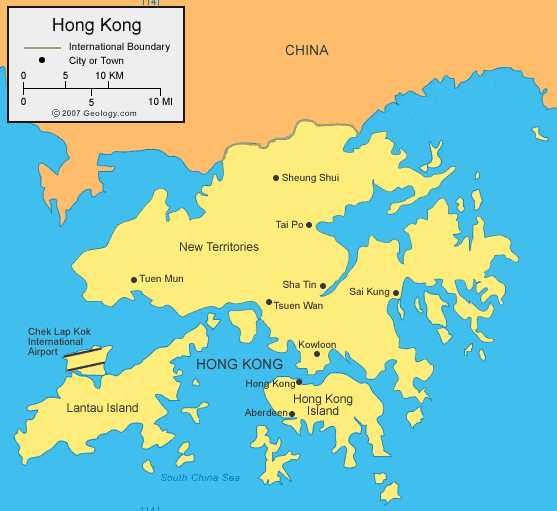
Hong Kong is actually not considered part of Southeast Asia; it’s located in East Asia. However, many travelers like to include it in a South East Asia multi country tour.
Hong Kong: A Dynamic Hub of Culture, Commerce, and Skyscrapers
Hong Kong, located on the southern coast of China, stands as a vibrant metropolis that seamlessly marries East and West, tradition and modernity. While it’s not part of Southeast Asia, it is often included in discussions about travel in the region due to its proximity and unique character. Here’s why Hong Kong is a highlight for many travelers:
Top City: Hong Kong Island and Kowloon Peninsula
- Famous Attractions: The iconic skyline featuring towering skyscrapers and Victoria Peak, offering panoramic views of the city. The bustling streets of Mong Kok, known for their vibrant markets, and the Avenue of Stars along Victoria Harbour.
- Why Visit: Hong Kong Island and Kowloon Peninsula offer a blend of cultural experiences, world-class shopping, dining, and a mix of traditional and modern attractions. The vibrant street life, efficient public transportation, and diverse culinary scene make it a must-visit for urban explorers.
Cultural Diversity and Cuisine
- Famous Attractions: Temple Street Night Market, where you can experience local street food and shop for everything from gadgets to souvenirs. Wong Tai Sin Temple and Po Lin Monastery with the famous Tian Tan Buddha.
- Why Visit: Hong Kong’s diverse culture is a testament to its history as a global trading hub. The city’s neighborhoods showcase a blend of Chinese and British influences, evident in its architecture, traditions, and festivals. The culinary scene is particularly impressive, with Michelin-starred restaurants and street food stalls side by side.
Hong Kong Disneyland and Ocean Park
- Famous Attractions: Hong Kong Disneyland, featuring classic Disney characters and attractions, and Ocean Park, a marine-life theme park with animal exhibits and thrilling rides.
- Why Visit: Whether you’re traveling with family or seeking some lighthearted fun, these theme parks offer a break from the urban hustle and bustle. They provide a chance to enjoy entertainment, cultural experiences, and interactive attractions.
Efficient Public Transportation
- Famous Attractions: The Hong Kong Mass Transit Railway (MTR), a highly efficient subway system that connects major parts of the city.
- Why Visit: Hong Kong’s transportation network makes getting around the city a breeze. The MTR, along with buses, trams, and ferries, offers seamless connectivity to various attractions, neighborhoods, and outlying islands.
While Hong Kong is not part of Southeast Asia, it remains a captivating destination due to its dynamic blend of cultures, stunning skyline, diverse culinary scene, theme parks, and efficient public transportation. It’s a city that manages to captivate visitors with its unique character, making it an essential stop for those exploring the broader East Asian region.
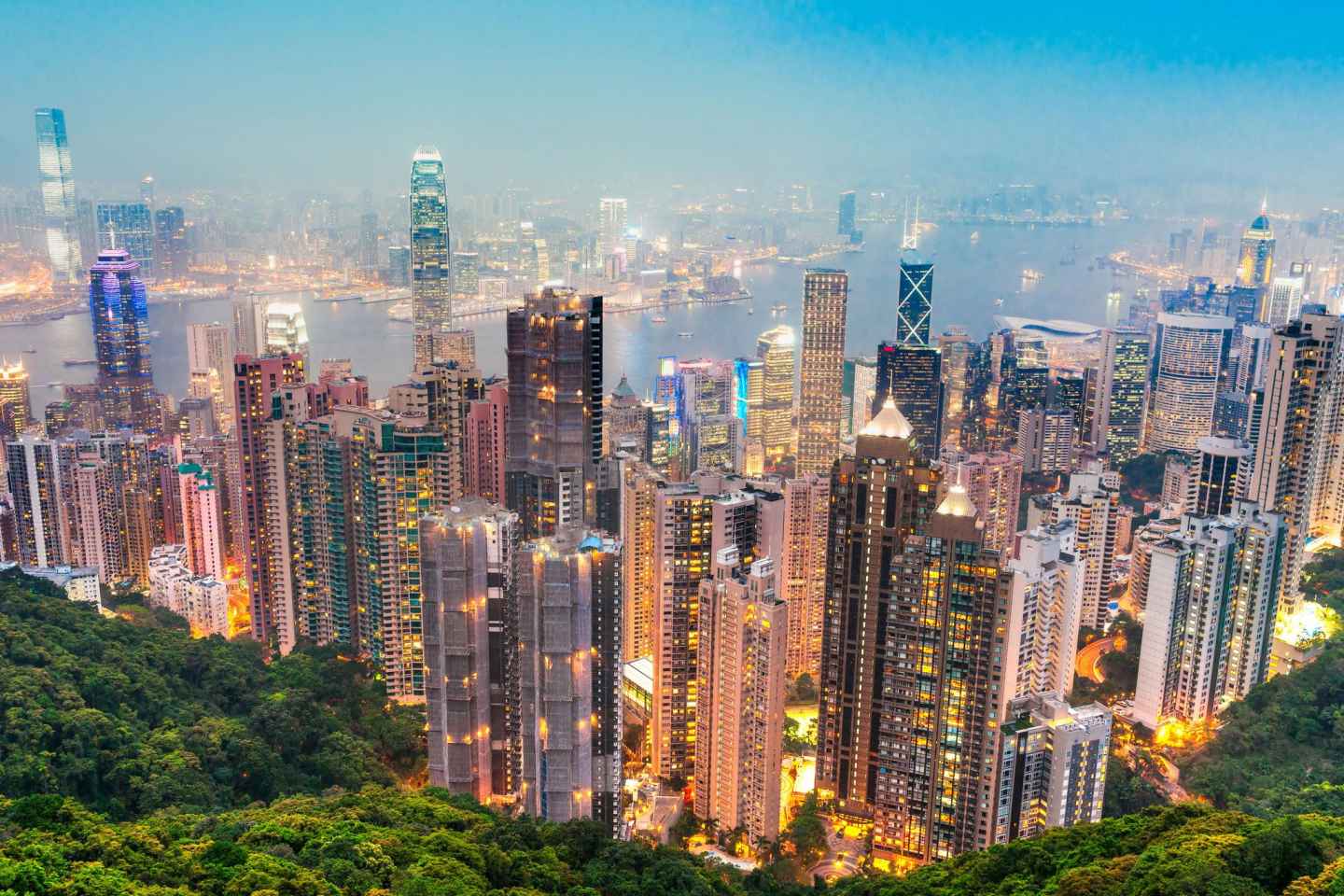
Best Time of Year to Visit
The best time to visit Hong Kong is during the cooler and more comfortable months of autumn (September to November) and spring (March to May). These seasons provide pleasant weather and are generally considered the most favorable for tourism. Here’s a breakdown of Hong Kong’s different seasons:
- Autumn (September to November): Autumn is often regarded as the best time to visit Hong Kong. The weather is relatively cool, with lower humidity and less rainfall. This is an ideal time for outdoor activities, sightseeing, and exploring the city’s various attractions. The autumn months also coincide with some festivals and events, enhancing the cultural experience.
- Winter (December to February): While winter in Hong Kong is mild compared to many other places, it can still get quite chilly for locals and visitors accustomed to warmer climates. December and January are the cooler months, but they are still suitable for exploration. However, be aware that it can be foggy and damp during this time.
- Spring (March to May): Spring is another pleasant time to visit Hong Kong. The temperatures rise gradually, and the city comes alive with blooming flowers and greenery. It’s a great time to explore outdoor attractions, enjoy hikes, and take in the beauty of the city’s natural surroundings.
- Summer (June to August): Summer in Hong Kong is hot, humid, and prone to heavy rainfall, with occasional typhoons. While it’s not the most comfortable time to visit due to the heat and humidity, some travelers do visit during this period to take advantage of lower prices and fewer crowds. Beach activities are popular, but be cautious about potential weather disruptions.
Considering Hong Kong’s subtropical climate, it’s important to note that the weather can be somewhat unpredictable even during the “best” seasons. Typhoons are most common between May and November, and while they don’t necessarily disrupt travel plans, they can lead to changes in outdoor activities and affect transportation services.
The best times to visit Hong Kong are the autumn months (September to November) and spring months (March to May) when the weather is most pleasant and suitable for outdoor activities. However, each season has its own appeal, so choose based on your preferences for weather, crowd levels, and specific activities you wish to engage in.
Other Travel Gems In The Region
South Korea, Japan, and India, while not technically part of South East Asia, are still incredibly popular countries to tour. In northern India you have the famous royal palace Taj Mahal. Japan’s capital city of Tokyo is a bustling metropolis and an incredible adventure to navigate. Take one of the famous bullet train rides from Tokyo out to Mt Fuji. South Korea offers technological wonder in big cities like Seoul. Take a trip up to the DMZ and experience the 39th parallel and dividing line between the north and the south. The point is, any trip is yours to be absolutely loved. Start with some research before you visit Asia before booking that amazing tour.
Recommended Tour And Tour Groups
G Adventures
G Adventures stands out as an exceptional tour company for booking trips to Southeast Asia due to its unique blend of responsible and immersive travel experiences. With a strong commitment to sustainable tourism, G Adventures offers small group tours that prioritize local communities, minimize environmental impact, and provide authentic cultural interactions. Their knowledgeable local guides enhance the travel experience by offering insights into the region’s history, traditions, and hidden gems. From adventurous activities to cultural explorations, G Adventures crafts itineraries that balance meaningful encounters with personal growth, making it an excellent choice for those seeking impactful and unforgettable journeys in Southeast Asia.
Viator
Viator is a trusted tour agency renowned for its seamless booking of day trips during vacations. With a wide array of curated activities and excursions, Viator offers options that cater to diverse interests and preferences. Their commitment to quality is evident through vetted reviews and reliable local operators, ensuring a safe and enjoyable experience. The user-friendly platform allows for convenient booking, often with flexible cancellation policies. For travelers seeking hassle-free and enriching day trips, Viator emerges as a top choice due to its reputation for delivering exceptional, memorable adventures.
Tour Radar
TourRadar has established itself as a trusted tour agency, particularly for booking trips to Southeast Asia. With a vast selection of tours from reputable operators, TourRadar ensures travelers have access to diverse itineraries that cater to various preferences and budgets. Their transparent reviews and detailed information about each tour provide valuable insights, aiding travelers in making informed decisions. The user-friendly platform simplifies the booking process, often offering competitive prices and flexible booking terms. For those looking to explore the wonders of Southeast Asia, TourRadar’s reliability, variety, and ease of use make it an excellent choice for planning unforgettable journeys.
Check out one of Tour Radars Below SE Asia Trips
Southeast Asia Tour Time?
Embarking on a journey through Southeast Asia is embarking on an amazing adventure that transcends mere travel—it’s a life-enriching experience that finds its place on countless bucket lists. With carefully curated Asia tour packages, you’re invited to explore the vibrant tapestry of cultures, breathtaking landscapes, and genuine warmth of the people that make this region a must-visit on any Asia vacation.
From traversing bustling markets to gazing upon iconic rice paddies, this enchanting corner of the world beckons travelers to immerse themselves in the awe-inspiring beauty and diversity of the world’s largest continent. So, set out on one of the most unforgettable tours of your life, and let Southeast Asia’s incredible wonders etch their mark on your heart forever.

